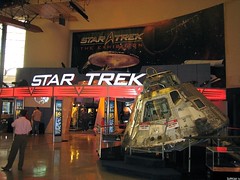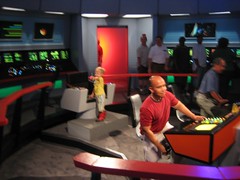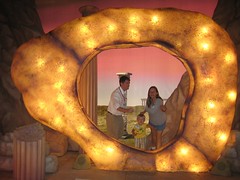Hasta La Vista, Windows XP
OK, I'm probably not the first person to think of that headline, but what the heck. Today, we're mourning the passing--sort of--of an old friend here, and I think it's OK to be informal given the egregious amount of time he hung around in the first place. I won't bore you with the specifics of the rest of XP's life cycle: I spelled that out earlier in Microsoft Will Not Extend XP Lifecycle Again: Here's What's Really Happening. Instead, I'd like to just take a few moments to look back on the somewhat inglorious early history of Windows XP, which should make for an interesting comparison with Vista's first year. Because for some reason, with XP, a lot of people seem to have the one-sided memory that often accompanies a passing. It wasn't all ice cream and pie, people.
First of all, Microsoft has sold several hundred million copies of Windows XP, and the OS is undoubtedly the best-selling Windows version ever. But it was that successful only because the product was artificially kept on the market longer than necessary. If XP had been replaced in 2004, as it should have been, it would have gone down in history as one of the most forgettable releases of the product ever. Instead, Microsoft kept XP alive by giving that 2004 release away for free, calling it Windows XP Service Pack 2 (SP2).
Before that, XP launched with a whimper in October 2001--I noted that the disappointing "midnight madness" events Microsoft organized were "neither midnight nor madness" in a Short Takes article from that month, and they took place after a "boring and long" launch event. Even Microsoft group vice president Jim Allchin was sanguine about XP during the launch, noting, "It's only a product." Gateway CEO Ted Waite revealed on stage during the launch that XP would have no effect on his company's sales at all.
http://tinyurl.com/576tol
Just after the XP launch, Microsoft settled its antitrust case with the US government. As I wrote at the time, "I think the settlement fails miserably [at] punishing Microsoft for its illegal activities and preventing it from continuing such activities in the future." What it did do, of course, was change the way Microsoft bundles products with its OSes. And you can thank/blame the rise of Windows Live applications on this change.
http://tinyurl.com/5pyut2
With XP complete, Microsoft turned its attention to XP SP1, unlike with Vista, where they pretended there wasn't an SP1. And Allchin revealed that the next Windows version, codenamed Longhorn, would hit beta in 2002 and ship in 2003. That worked out wonderfully, as you may recall. Note that after Vista shipped, Microsoft refused to discuss the next version of Windows (Windows 7). Clearly, the company's XP experiences guided this change of strategy.
http://tinyurl.com/5dpx2f
XP was barely out the door before the OS's first major security vulnerability hit, a serious UPnP flaw that left XP owners open to electronic attack. Microsoft responded to this threat by asking Web sites to stop popularizing security breaches in its products. Yes, seriously.
http://tinyurl.com/6aywgr
In December 2001, Allchin said that XP sales were "on track," and the company was "very happy." However, analysts and retailers were reporting that XP wasn't selling as quickly as had previous, consumer-oriented Windows 9x versions. And retail sales of XP were still lagging those of Windows 98 at the time.
http://tinyurl.com/6bsndb
With 2001 ending, pundits seized the opportunity to jump all over XP in a manner that would later be repeated with Vista. There are two differences, however. More people are online now, so Vista looks worse by comparison. And XP's issues were actually quite serious, unlike those that users faced with Vista over the past year. I'll take a missing printer driver over systemic OS flaws any day. Call me crazy.
http://tinyurl.com/6esl5z
By the end of December, panic had set in. XP retail sales plummeted from 400,000 copies in October 2001 to just 250,000 in November 2001. Windows 98, meanwhile, had sold 580,000 copies in its first month on the market and 350,000 in its second. Microsoft chairman Bill Gates announced at CES 2002 in January that XP sales were "double" those of the previous version, using licenses sold by PC makers as the barometer for that statement.
http://tinyurl.com/6gavuv
Speaking of CES, Microsoft also revealed a software project there called Freestyle. This would go on to become Windows XP Media Center Edition, which entered the market in late 2002. Microsoft eventually shipped four different XP Media Center versions over the years, as well as two XP Tablet PC versions. But as Apple has so frequently reminded us, the Cupertino company shipped three versions of Mac OS X between XP's release in 2001 and Vista's release in 2006, while Microsoft never upgraded Windows. Curious.
http://tinyurl.com/5ml5x7
By January, XP's security problems were so bad that Bill Gates wrote a memo called Trustworthy computing, a concept he described as the company's highest priority. "There are many changes Microsoft needs to make as a company to ensure and keep our customers' trust at every level - from the way we develop software, to our support efforts, to our operational and business practices. As software has become ever more complex, interdependent and interconnected, our reputation as a company has in turn become more vulnerable. Flaws in a single Microsoft product, service or policy not only affect the quality of our platform and services overall, but also our customers' view of us as a company."
http://tinyurl.com/69m7jt
What Gates was really saying was that Microsoft would begin promoting security over new features in its products. This switchover was years-long in the making, and the company eventually halted Windows Vista ("Longhorn") development for nine months so that it could go back and perform a full security review of XP.
http://tinyurl.com/5aag7c
And with that, we're just three months into XP's existence. Good times, good times.
By the way, Microsoft's Trustworthy Computing work eventually resulted in Windows XP SP2, which was given away free to customers in late 2004. XP SP2 was the first major software product revised during the Trustworthy Computing era and Vista, released in late 2006, was the first completely new Trustworthy Computing product. Note that the time delta between XP and XP2 was actually longer than the delta between XP SP2 and Vista. Just a thought for the next time you want to talk about product development time.
As for the Vista complaints of today, we might reflect for a moment on our short memories and remember that Windows XP, in just its first few months on the market, suffered from more problems that Vista has had in its entire lifetime so far. As with any major Windows release, Vista came with its share of compatibility and performance issues when compared to its predecessor (though those are almost completely resolved by now, of course). That's nothing new. But as XP heads off into a distant sunset, I prefer to be honest about that product. Yes, it was the best that Microsoft could do at the time and a big technical advance over the 9x versions of Windows. But Vista is the superior product, and that's especially true when you compare both XP and Vista with regards to the times in which they were respectively released.
Hasta la Vista, Windows XP.
What amazes me is how long this thing would be if I went back to find problems in XP's first full year. We really do paint a rosy picture of the past in our minds. I wonder if forgetting the bad times is a key way that people psychologically deal with life?
 Instead of throwing out those old floppy disks, grab a couple of zip ties and turn them into a roomy, DIY pen holder that pays homage to the old school method of data storage. Do-it-yourselfer completegeek posts the straightforward step-by-step. In short, drill a couple of holes into the disks, fasten them together with zip ties, and trim off extra length with scissors. Easy-peasy, with nifty results! Photo by
Instead of throwing out those old floppy disks, grab a couple of zip ties and turn them into a roomy, DIY pen holder that pays homage to the old school method of data storage. Do-it-yourselfer completegeek posts the straightforward step-by-step. In short, drill a couple of holes into the disks, fasten them together with zip ties, and trim off extra length with scissors. Easy-peasy, with nifty results! Photo by 




















 Summervacation means that there is more time for movies with the kids. Here at GeekDad we bring up a lot of geeky TV but this summer, I am getting the full value out of my Netflix subscription and concocting a summer movie list of classic sci-fi to keep me, er, the kids, entertained. When I remember the movies on my list so far (some of which I haven't seen in ages), I remember them being fairly benign and kid-friendly compared with today's PG and PG-13 fare. They also reflect an older style of storytelling, one that builds action and character over time to develop dramatic impact instead of today's blockbuster style of throwing it in your face all at once. Plus, the craftsmanship in sets, costumes, and effects are what inspired today's generation of CGI renderers. (Is there any effects artist out there who doesn't love Ray Harryhausen?) Hopefully the geeklings (9 and 5) will go for it. Read the list after the jump. What other movies should be on it?
Summervacation means that there is more time for movies with the kids. Here at GeekDad we bring up a lot of geeky TV but this summer, I am getting the full value out of my Netflix subscription and concocting a summer movie list of classic sci-fi to keep me, er, the kids, entertained. When I remember the movies on my list so far (some of which I haven't seen in ages), I remember them being fairly benign and kid-friendly compared with today's PG and PG-13 fare. They also reflect an older style of storytelling, one that builds action and character over time to develop dramatic impact instead of today's blockbuster style of throwing it in your face all at once. Plus, the craftsmanship in sets, costumes, and effects are what inspired today's generation of CGI renderers. (Is there any effects artist out there who doesn't love Ray Harryhausen?) Hopefully the geeklings (9 and 5) will go for it. Read the list after the jump. What other movies should be on it? 



 Fantastic Voyage
Fantastic Voyage



 This Island Earth
This Island Earth









